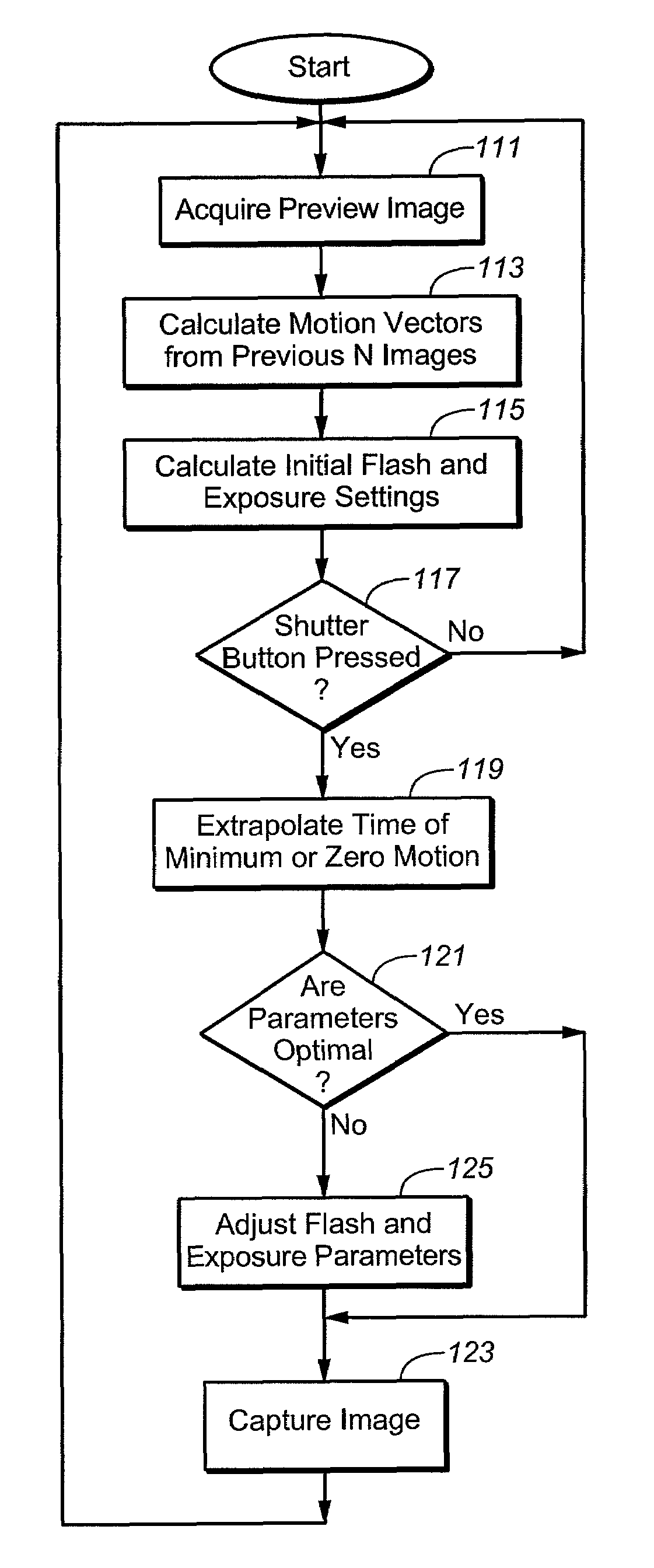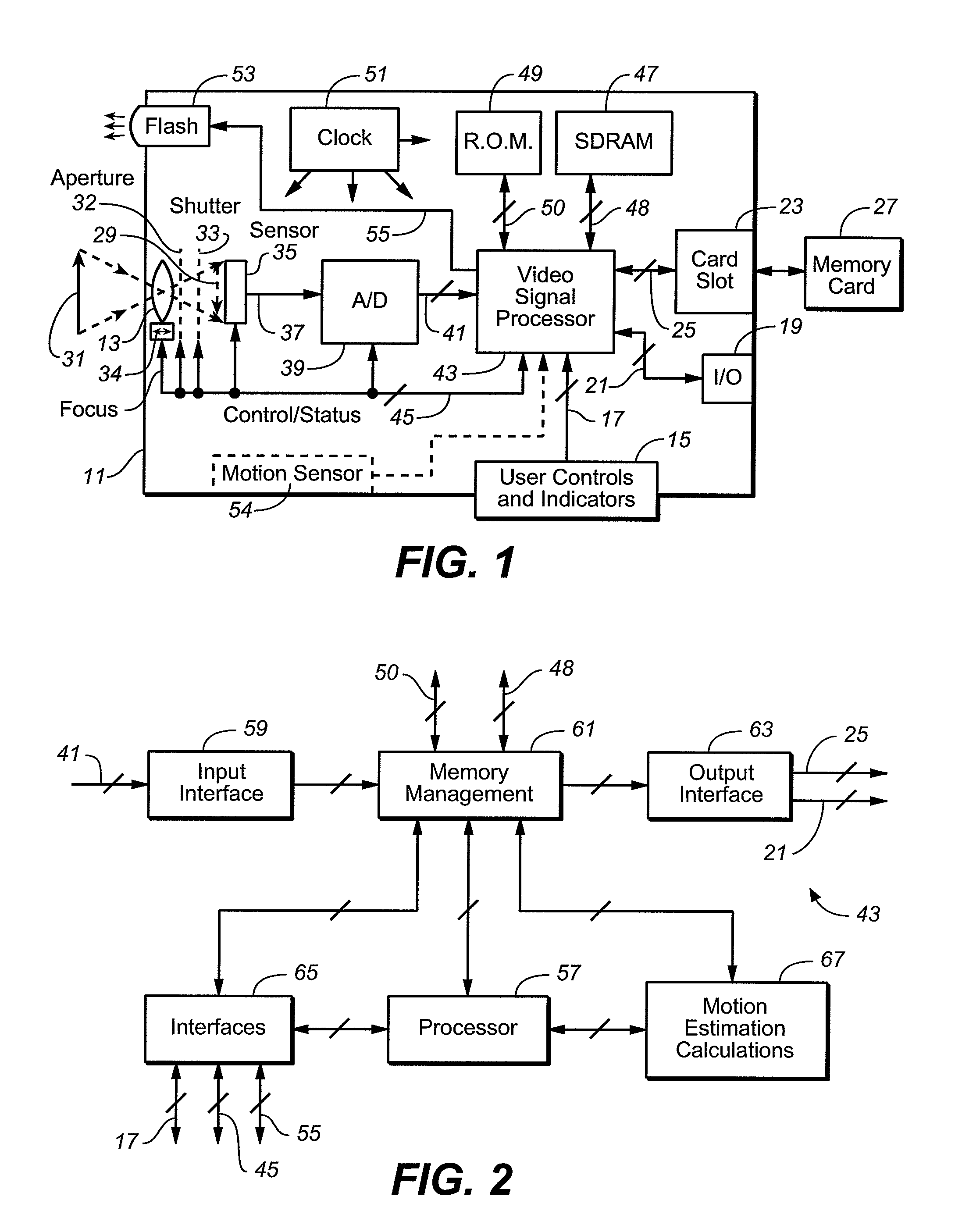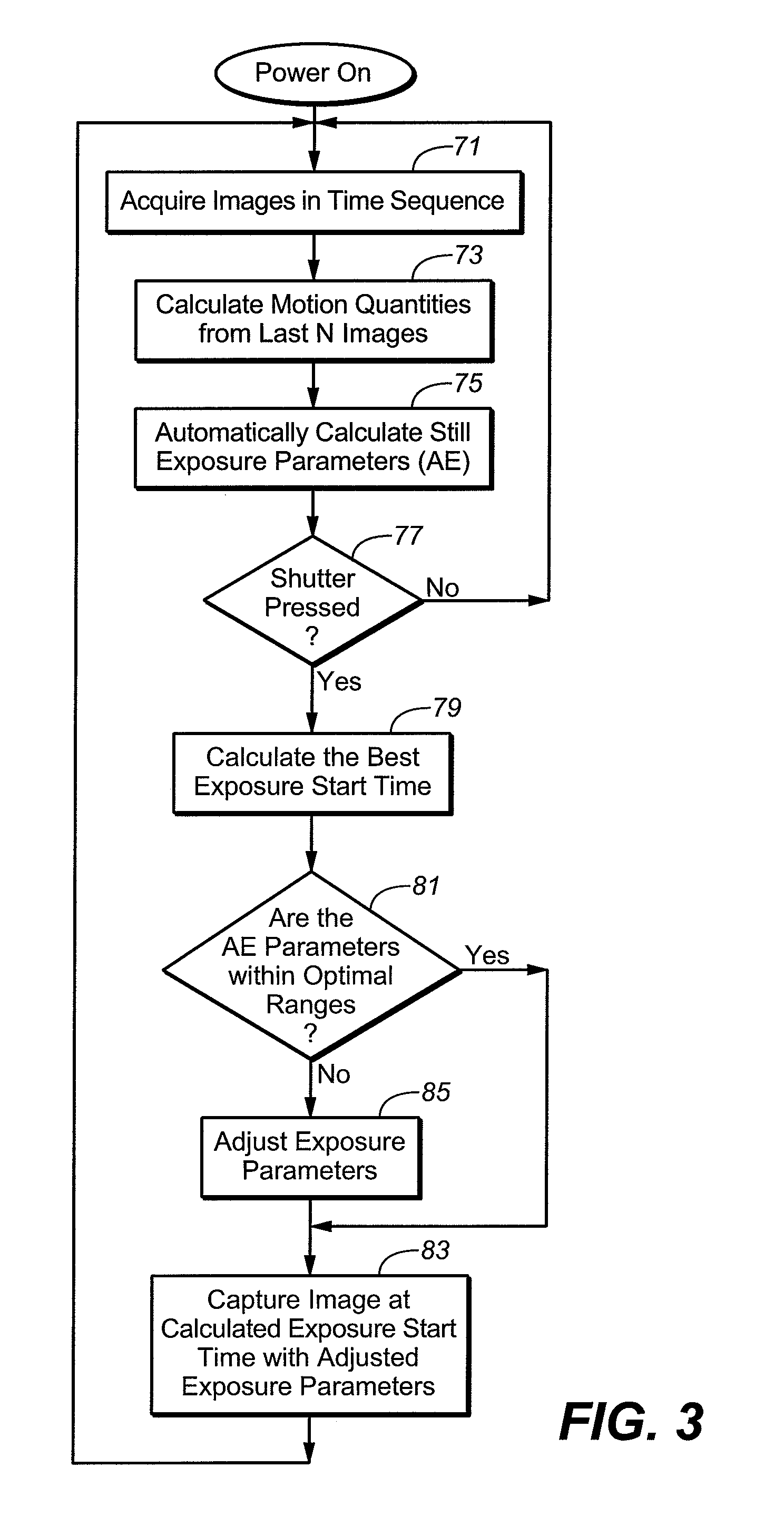Control of artificial lighting of a scene to reduce effects of motion in the scene on an image being acquired
a technology of artificial lighting and scene, which is applied in the field of automatic exposure control of digital cameras, can solve the problems of reduced depth of field and increased optical blur, increased noise within the image, and difficulty for users to hold a camera by hand during an exposure without imparting some degree, so as to reduce or eliminate motion blur in the image, improve the quality of the captured image, and reduce the effect of motion blur in the resulting imag
- Summary
- Abstract
- Description
- Claims
- Application Information
AI Technical Summary
Benefits of technology
Problems solved by technology
Method used
Image
Examples
Embodiment Construction
[0029]Video data acquired by a digital camera are typically processed to compensate for imperfections of the camera and to generally improve the quality of the image obtainable from the data. The correction for any defective pixel photodetector elements of the sensor is one processing function that may be performed. Another is white balance correction wherein the relative magnitudes of different pixels of the primary colors are set to represent white. This processing may also include de-mosaicing the individual pixel data to superimpose data from spatially separate monochromatic pixel detectors of the sensor to render superimposed multi-colored pixels in the image data. This de-mosaicing then makes it desirable to process the data to enhance and smooth edges of the image. Compensation of the image data for noise and variations of the camera optical system across the image and for variations among the sensor photodetectors may also be performed. Other processing typically includes on...
PUM
 Login to View More
Login to View More Abstract
Description
Claims
Application Information
 Login to View More
Login to View More - R&D
- Intellectual Property
- Life Sciences
- Materials
- Tech Scout
- Unparalleled Data Quality
- Higher Quality Content
- 60% Fewer Hallucinations
Browse by: Latest US Patents, China's latest patents, Technical Efficacy Thesaurus, Application Domain, Technology Topic, Popular Technical Reports.
© 2025 PatSnap. All rights reserved.Legal|Privacy policy|Modern Slavery Act Transparency Statement|Sitemap|About US| Contact US: help@patsnap.com



